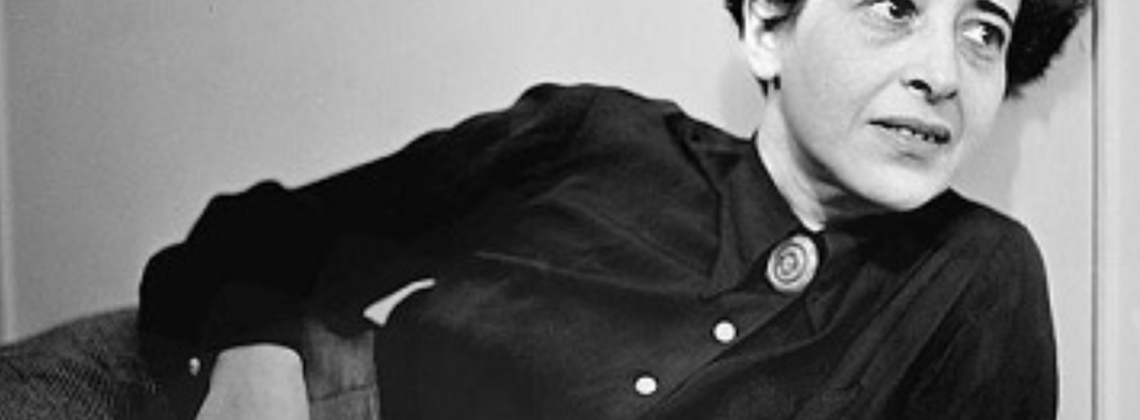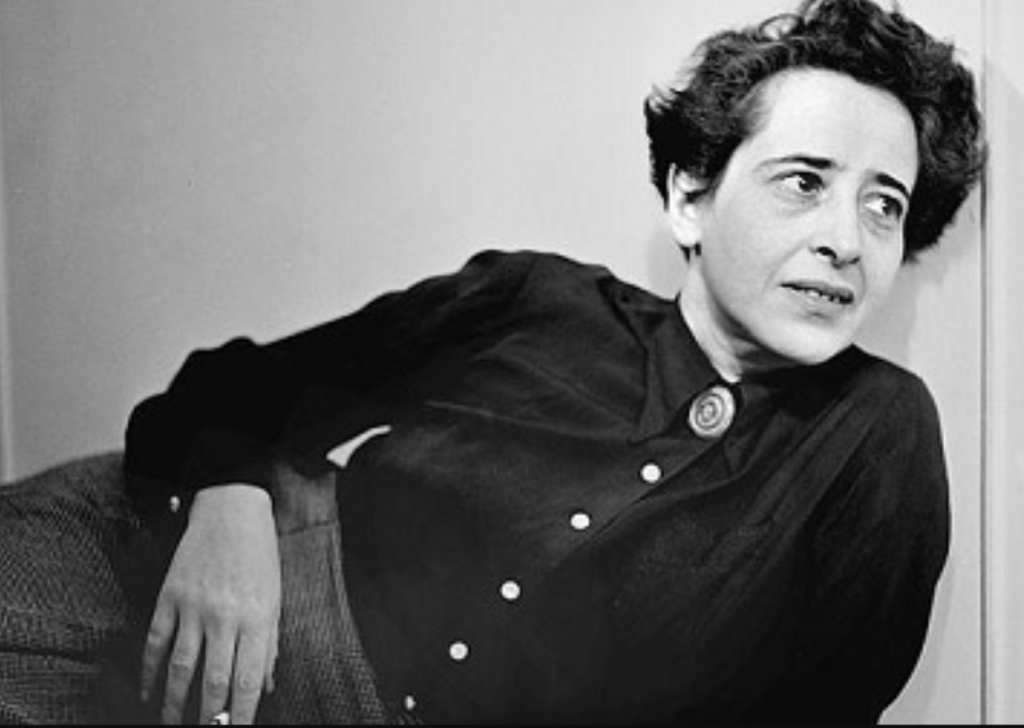

What is the basis of Samuel Moyn’s hope?
Liberalism Against Itself: Cold War Intellectuals and the Making of Our Times by Samuel Moyn. Yale University Press, 2023. 240 pp., $20.00 (paperback)
“Liberalism” is surely one of the slipperiest of the keywords in American history. In the nineteenth century, it could refer to free-market capitalism, while in the twentieth it became a synonym for the welfare state. In the wake of this shift, defenders of the free market came to call themselves “conservatives,” only to have political progressives (i.e., twenty-first-century liberals) label such a position “neoliberalism.” This chameleon-like quality would seem to render the term meaningless, yet it retains a certain power for many left-of-center intellectuals who invoke it as a word meant to capture all that is good in modernity. The defense of liberal modernity has taken on a certain urgency in recent years as populist political movements throughout the contemporary West seem ready to discard the achievements of modern liberalism in favor of some form of tribal ethno-religious nationalism.
Samuel Moyn’s Liberalism Against Itself: Cold War Intellectuals and the Making of Our Times, is among the most significant of these recent defenses of liberalism. The book’s significance derives in no small part from its author. Moyn is perhaps the leading historian of the development of the idea of human rights in modern Western thought. His works include The Last Utopia: Human Rights in History (2010), Christian Human Rights (2015), and Not Enough: Human Rights in an Unequal World (2018). In these works, Moyn writes as a passionate defender of the human rights tradition even as he clearly delights in debunking pious myths about the origins and development of recent notions of human rights. More specifically, his first two works argue that the idea that human beings possess rights that transcend the authority of nation-states found its support first in that most illiberal of institutions, the Roman Catholic Church; Moyn goes so far as to say that the Catholic Church usurped the secular tradition of human rights bequeathed by the French Revolution in order to impose its moral agenda on post-World War II European politics.
In his most recent work, Moyn offers yet another counterintuitive historical argument: The roots of the contemporary assault on liberalism lay in liberalism itself, or more precisely, a specific historical manifestation known conventionally as “Cold War Liberalism.” Ostensibly, the book offers chapter-length studies of six postwar liberal thinkers: Judith Shklar, Isaiah Berlin, Karl Popper, Gertrude Himmelfarb, Hannah Arendt and Lionel Trilling. As Cold War liberals, each of these thinkers stood with the West against the Soviet Union; however, each also saw the roots of Stalinist totalitarianism in the utopian dreams of nineteenth-century socialism and seemed to dismiss the broader dream that modern politics—in particular the modern secular nation-state—could bring about meaningful improvement in the human condition. Moyn’s shocking conclusion: The Cold War liberal suspicion toward the modern nation-state paved the way for contemporary neoliberalism.
Far more shocking than this conclusion is Moyn’s failure to pull it off. As someone who learned much from reading his Last Utopia, I was surprised at how little I learned from reading Liberalism Against Itself. The former offers a solid intellectual history of human rights; the latter amounts to a screed against the internal enemies of liberalism. In this, Liberalism Against Itself functions as a kind of liberal jeremiad, a declension narrative decrying and denouncing the betrayal of the liberal faith by Cold War liberals and calling all liberals back to the “true” liberalism.
There is nothing more American than the jeremiad form; to identify the form is not to dismiss the argument, for jeremiads can sometimes be historically correct. One can see a decline in New Deal or Great Society liberalism in the Democratic Party during the Clinton era—that the party of the working man is now the party of intellectual elites is a history crying out for a jeremiad. Moyn, curiously, locates the roots of this betrayal in the 1950s, an era most historians would include within the larger historical period of the New Deal Order.
True, Moyn acknowledges this contradiction. In a paragraph that begins by accusing Cold War liberals of forsaking their earlier commitment to “social justice,” Moyn concedes that this betrayal “appeared at a time when liberals around the world were building the most ambitious and interventionist and largest—as well as the most egalitarian and redistributive—liberal states that had ever existed.”
Moyn wants to make the case for the significance of these thinkers even as he points out the glaring disconnect between their liberal political theory and actual liberal political practice. Yet the disconnect is of Moyn’s own making. Moyn too often conflates the liberal critique of communist and fascist totalitarianism with the libertarian critique of the welfare state. His Cold War liberals in turn come off as nearly indistinguishable from the postwar “conservatives” so insightfully chronicled in George Nash’s work.
Alternatively, he accuses Cold War liberals of a fatalism rooted in the neo-orthodox Christian thought associated with Reinhold Niebuhr. In this, he all but ignores how Niebuhrian “realism” inspired liberal activism in figures as different as Arthur Schlesinger, Jr. and Martin Luther King Jr. Outside of a small group of conservatives, the alternative to the totalitarian state was the liberal welfare state—in theory as well as in practice.
The problem seems to lie in both Moyn’s selection of intellectuals and his selective reading of their texts. Though each figure was undoubtedly important at the time (with the possible exception of Himmelfarb, whose real moment came later with the rise of neo-conservatism), the grouping seems somewhat idiosyncratic. His intellectuals share common influences and address similar problems, but few historians would recognize them as a cohesive social group in the manner of the New York intellectuals (though there is some overlap with this group). Beyond their intellectual concerns, Moyn notes that all his figures happen to be Jewish, though this hardly distinguishes them in a postwar intellectual milieu in which Jews were preeminent. The only point at which their Jewish roots seem to come into play is when Moyn examines their general support for Zionism, the one exception to their generally anti-utopian thinking. On this, he simply expresses regret that they could not have drawn on the idealism of early Zionism to inspire a renewed liberal idealism in the West. The common thread tying these thinkers together seems to be the theme of anti-utopianism, but again, Moyn seems unwilling to deal with the broader liberal intellectual climate in which such “realism” was compatible with a chastened, yet renewed, liberal activism.
Moyn seems more concerned with explaining our own time than understanding the worldview of Cold War liberalism. Those interested in understanding how anti-utopian thinking shaped postwar intellectual life would do better to read Howard Brick’s classic work, Daniel Bell and the Decline of Intellectual Radicalism (1986).
Bell was a more significant figure than any of Moyn’s players and Brick places his rejection of socialism in the context of his—and his generation’s—embrace of the thought of Max Weber as an alternative to Marxism. Weber was no radical, and his ruminations on bureaucracy could strike a radical as fatalism. But Weber was a German and believed in the power of the state to guide social progress. Against romantic utopianism, Weber insisted on an ethic of “responsibility,” a commitment to science and rationality as the best guides to slow, incremental progress. In Bell’s classic essay, “The End of Ideology in the West,” he describes these alternatives as a shift from the “faith ladder” of radicalism to the “empirical ladder” of welfare state liberalism.
Brick wrote at a time when left intellectuals were still asking the question, Why is there no socialism in America? Moyn writes at a time when left intellectuals seem to be asking: Why is there no liberalism in America? Roughly half of the United States identifies as liberal in one sense or another (i.e., they vote Democratic), but liberalism seems to be on the defensive as never before, even during the dark days of the Reagan era. In the 1980s, liberals only had to respond to the policy failures of the Great Society; in our own time, they must defend the broader foundations of liberal modernity in the Enlightenment. Moyn writes his book as a cri de coeur to inspire his fellow liberals to boldly proclaim the gospel of liberalism to a world of unbelievers.
Moyn’s nostalgia for liberal idealism is nowhere more evident than in his title. The very notion that liberalism could be against “itself” suggests that there is some essential liberalism against which all particular historical manifestations may be judged. What is this essential liberalism? Moyn’s recurring descriptors include: “emancipatory,” “futuristic,” “committed most of all to free and equal self-creation,” “accepting of democracy and welfare.” These honorifics could apply equally to postwar European social democracy, yet Moyn’s choice of the term liberalism (no doubt a function of his American audience) is less important than the ideals themselves.
Moyn is certainly free to hold these values, but the historical record of the relation between liberalism and these ideals is far from clear. Most irresponsibly, Moyn seems to suggest that the free-market capitalism promoted by nineteenth century liberals was just a fleeting detour on the inevitable road to social democracy. The history of Western politics since the 1980s suggests rather that the welfare state may have been the detour. Moyn assumes a clear distinction between “a Romantic liberalism of self-creation” and a “libertarian rendition of liberal politics” not born out in history: As difficult as it may be for an academic to appreciate, many a businessman believes that in creating his wealth he is creating himself. In his liberal essentialism, Moyn falls off the empirical ladder back to a faith ladder.
Not that there is anything wrong with that. America is a pluralistic democracy in which everyone is free to follow their own faith or none at all. I offer only two foundations for objections to Moyn’s liberal faith. First, historical honesty. How anyone can look to the Enlightenment, Romanticism, and the French Revolution as the solution to our contemporary political crisis is beyond me. To use a favorite phrase of Cold War liberals, Moyn is a “true believer.” Like other historically minded liberals, he simply explains away the horrors of the last two centuries as deviations from—rather than consequences of—liberal modernity itself.
Second, political fairness. If Moyn reserves the right to inject his liberal faith into contemporary politics, he needs to be willing to allow others to bring their faiths into the public square. He has proved unwilling to do so in his writings, consistently raising the alarm against Christian influence in modern politics—European Christian democracy no less than MAGA evangelicalism. Moyn attacks a minimalist understanding of liberalism that consigns emancipation and self-creation to the private sphere and calls for a robust public culture of emancipation. Yet he recoils in horror when religious groups attempt to introduce their highest values into politics. Does he really believe in religious freedom? Is the liberal public square an area for deliberation among groups with competing, even incompatible world views? Or is it a glorified college seminar room where like-minded liberals consider the next frontier of liberation? I will leave it to Moyn to answer these questions.
Christopher Shannon is associate professor of history at Christendom College in Front Royal, Virginia. He is the author of several works on U.S. cultural history and American Catholic history, including American Pilgrimage: A Historical Journey Through Catholic Life in a New World (2022).
Hannah Arendt, Wikimedia Commons